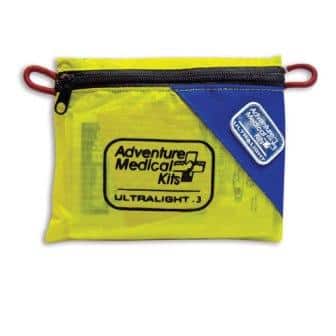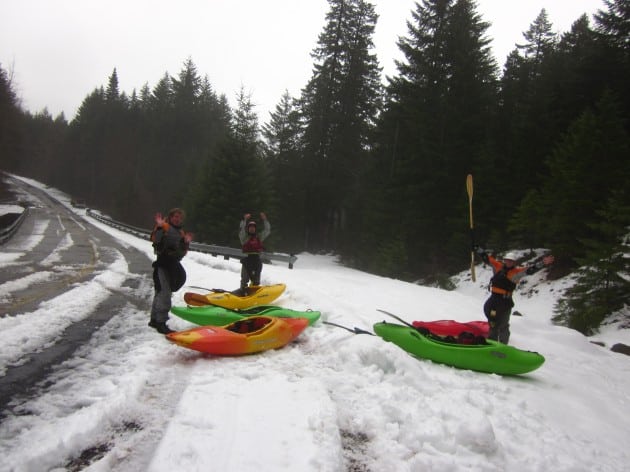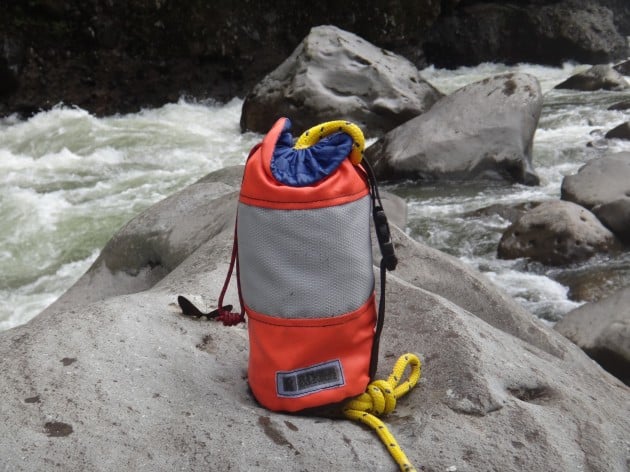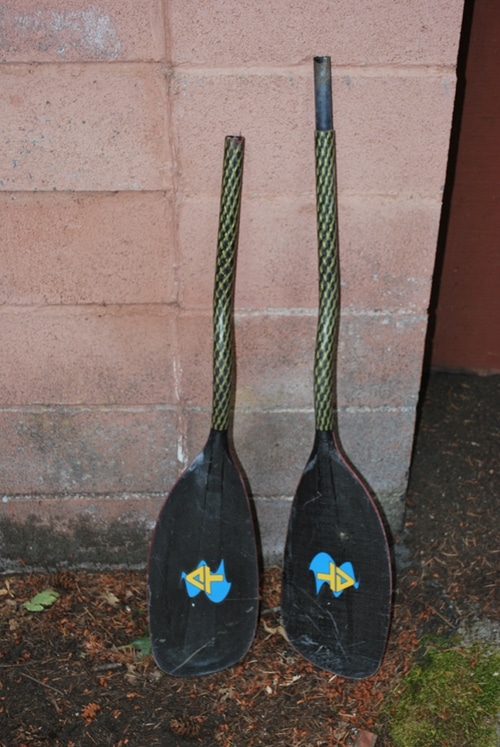Kayaking is a team sport. You count on your buddies, and your buddies count on you. While you’re on the river, you should make your own decisions, and choose your own lines, however you should also keep an eye out for your buddies, and work as a team to move downriver through the rapids.
Look behind you after every rapid and do a quick headcount. Better yet, have a buddy system, where each person has a paddle buddy and watches out for that person.
In addition, to help my buddies, I carry the following items in the stern of my kayak:
1. Throw-bag: The number one item to have on the river. A throw-bag can be used to safely extract a paddler from the water, setup a Z-drag, serve as a rappel rope, and much more. Rule of thumb is to carry the longest throw-bag you can carry in your boat. In general, the longer the better, as chances are you won’t be within reaching distance of your friend.
2. Pin Kit: Every so often, someone gets pinned, and the dead-weight that is a pin-kit gets put to good use! My pin kit is comprised of the following:
-2 to 3 carabiners
-1 or 2 pulleys
-2 prussik loops made of thin cordage
-4 feet of Tubular Webbing
Everything has multiple uses, however, in general, the tubular webbing is used as an anchor, and the rest can be used to set up a Z-drag or other form of extraction.
3. Break-down paddle: Commonly overlooked, it is my belief that this is one of the top three pieces of safety equipment to carry with you on the river. In the event someone swims and loses their paddle, a paddle is broken mid-rapid, or a paddle is broken on a hike in by falling boats, etc… you never want to be up a creek without a paddle. Carry it for yourself, for your friend, or the random paddler you’ll someday see stranded on the side of the river. Breakdowns come in a variety of styles- 2 piece for those paddling bigger, longer boats, and 4 piece for the smaller, short boats.
4. First Aid Kit: This one is optional. I carry one, because like I said, you never know what things are going to hit the fan. Â You can carry your basic first aid kit on your backyard run, or a bigger one for an overnight trip.

Before you go paddle, consider the following, and pack accordingly:
1. Where you are going?
2. How much daylight you have?
3. How many people will be in the group and what are the abilities of the paddlers?
4. What are you paddling- Class I-V or an overnight trip?
5. How close is the nearest road?
If you find yourself paddling in more remote locations, or on an overnight trip, you may choose to carry an emergency pair of fleece gloves and a hat, and a waterproof headlamp/flashlight.
Happy Paddling,
Kim Russell



